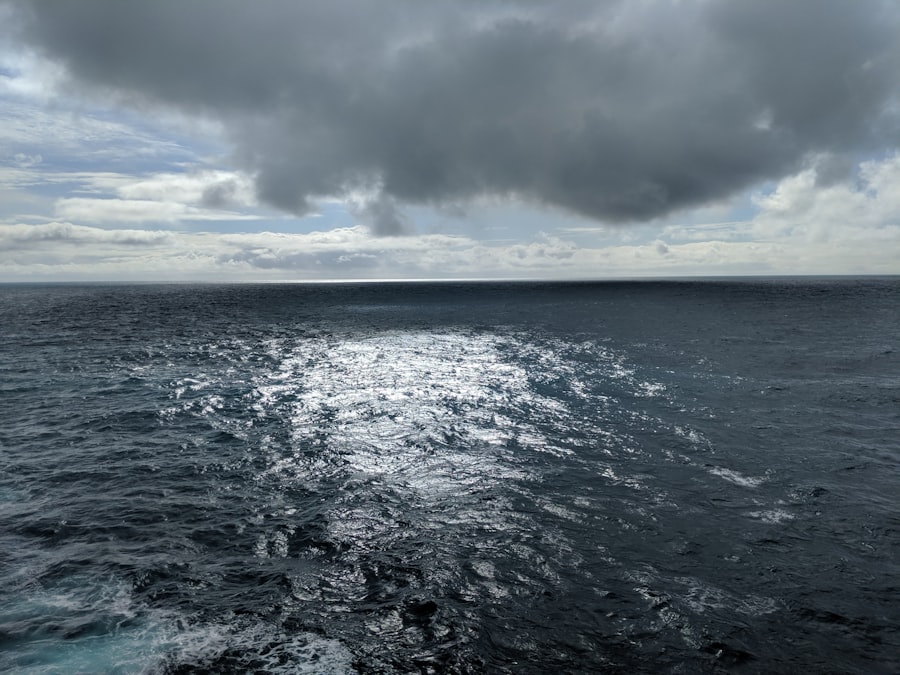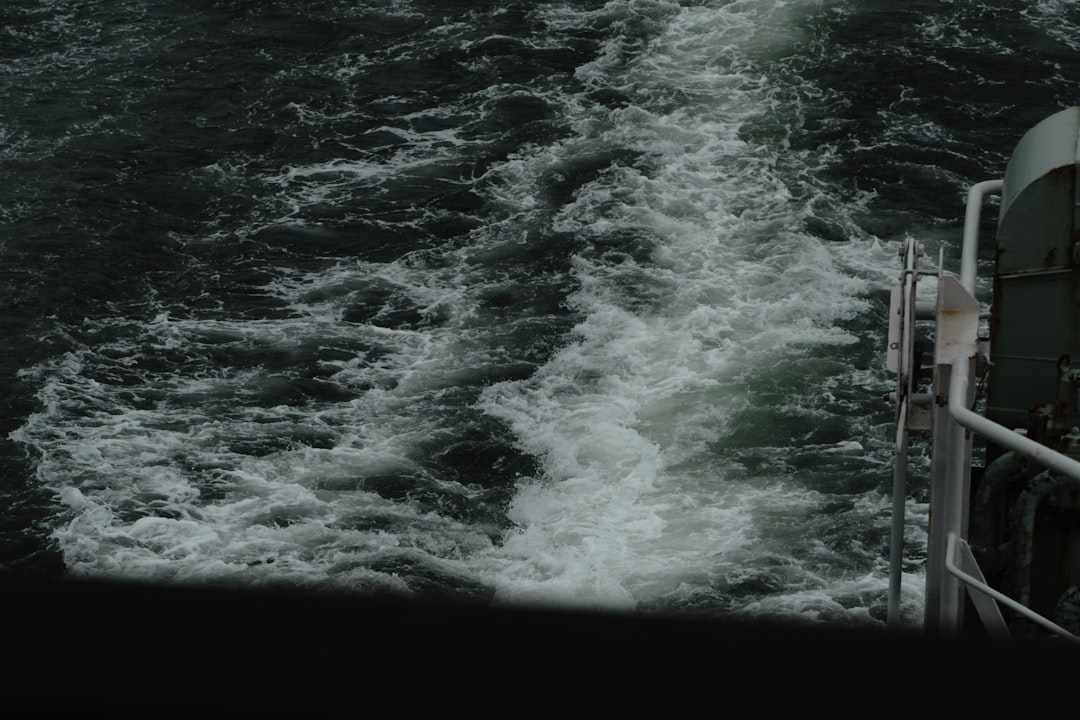Drake’s Passage, a body of water situated between the southern tip of South America and Antarctica, is renowned for its tumultuous seas and breathtaking vistas. This narrow stretch of ocean, measuring approximately 800 kilometers (500 miles) in width, serves as a critical conduit for maritime traffic between the Atlantic and Pacific Oceans. Named after the English explorer Sir Francis Drake, who navigated these waters in the late 16th century, the passage has become a focal point for adventurers, researchers, and wildlife enthusiasts alike.
Its unique geographical position not only makes it a significant maritime route but also a vital area for ecological study and environmental conservation. The passage is often characterized by its unpredictable weather patterns and rough seas, which can pose significant challenges to even the most seasoned sailors. Despite these difficulties, Drake’s Passage remains an alluring destination for those seeking to experience the raw power of nature.
The waters are teeming with life, and the surrounding landscapes are nothing short of spectacular. As explorers and scientists continue to study this remarkable region, they uncover new insights into its ecological importance and the role it plays in global climate systems.
Key Takeaways
- Drake’s Passage is a narrow body of water between South America’s Cape Horn and the South Shetland Islands of Antarctica, known for its treacherous and unpredictable conditions.
- Named after the famous explorer Sir Francis Drake, the history of Drake’s Passage is filled with tales of shipwrecks, exploration, and the quest for a sea route between the Atlantic and Pacific Oceans.
- The passage is home to a diverse range of wildlife, including whales, seals, and seabirds, making it a popular destination for wildlife enthusiasts and researchers.
- Navigating Drake’s Passage presents numerous challenges, including strong winds, rough seas, and icebergs, making it one of the most challenging maritime routes in the world.
- The surrounding landscape of Drake’s Passage is characterized by dramatic icebergs, towering cliffs, and stunning glaciers, offering breathtaking views for those brave enough to venture through.
The History of Drake’s Passage
The history of Drake’s Passage is steeped in exploration and adventure. Sir Francis Drake was the first known European to navigate these waters during his circumnavigation of the globe in the late 1570s. His journey not only established the passage as a viable route for maritime travel but also opened up new opportunities for trade and exploration in the New World.
The treacherous waters of the passage have since been traversed by countless explorers, traders, and naval forces, each leaving their mark on its storied past. Throughout the centuries, Drake’s Passage has been a site of both discovery and peril. The passage has witnessed numerous shipwrecks and maritime disasters due to its notoriously rough seas and unpredictable weather conditions.
These historical events have contributed to the lore surrounding the passage, making it a subject of fascination for historians and adventurers alike. As maritime technology advanced, so too did the ability to navigate these challenging waters, leading to increased traffic through the passage and further solidifying its importance in global maritime history.
Wildlife in Drake’s Passage

Drake’s Passage is not only significant for its historical context but also for its rich biodiversity. The waters are home to a variety of marine life, including whales, seals, and an array of seabirds. The nutrient-rich currents that flow through the passage create an ideal environment for krill, which serves as a crucial food source for many species.
In addition to marine mammals, the passage is also a haven for seabirds such as albatrosses and petrels. These birds are often seen gliding effortlessly over the waves, taking advantage of the strong winds that characterize the region.
The unique ecosystem of Drake’s Passage provides researchers with valuable opportunities to study the interactions between species and their environment. Conservation efforts are increasingly focused on protecting this delicate balance, as climate change and human activity pose significant threats to the wildlife that call these waters home.
The Challenges of Navigating Drake’s Passage
| Challenges | Factors |
|---|---|
| Strong Winds | Wind speeds can reach up to 70 mph, creating rough seas |
| High Waves | Wave heights can exceed 30 feet, causing instability for ships |
| Narrow Passage | Drake’s Passage is a narrow stretch of water, making navigation difficult |
| Icebergs | Potential presence of icebergs adds to the navigational hazards |
Navigating Drake’s Passage is no small feat; it is often regarded as one of the most challenging maritime routes in the world. The passage is notorious for its fierce winds, towering waves, and rapidly changing weather conditions. Sailors must be prepared for sudden storms that can arise without warning, making careful planning and experience essential for safe passage.
Many vessels have encountered difficulties while traversing these waters, leading to a reputation that deters less experienced mariners. The unpredictable nature of Drake’s Passage requires navigators to possess not only technical skills but also an intimate understanding of the local weather patterns. Advanced technology has improved safety measures over the years, yet the passage remains a formidable challenge.
Those who dare to sail through must be equipped with reliable navigation tools and a thorough knowledge of maritime safety protocols. Despite these challenges, many adventurers are drawn to the thrill of navigating such a legendary waterway, eager to test their skills against nature’s formidable forces.
The Beauty of the Surrounding Landscape
The landscapes surrounding Drake’s Passage are as captivating as the waters themselves. Towering mountains, glacial formations, and rugged coastlines create a dramatic backdrop that enchants all who venture into this remote region. The stark contrast between the icy blues of glaciers and the deep greens of coastal vegetation paints a breathtaking picture that is both serene and awe-inspiring.
This natural beauty is further enhanced by the ever-changing light conditions that characterize the area, with sunrises and sunsets casting vibrant hues across the landscape. Explorers and tourists alike are often struck by the pristine wilderness that defines this part of the world. The remote islands scattered throughout the passage offer unique opportunities for hiking and wildlife observation, allowing visitors to immerse themselves in nature’s splendor.
Photographers flock to this region to capture its stunning vistas, while researchers study its geological features to better understand Earth’s climatic history. The beauty of Drake’s Passage serves as a reminder of nature’s power and fragility, inspiring efforts to protect this remarkable environment for future generations.
The Role of Drake’s Passage in Global Trade

Drake’s Passage plays a crucial role in global trade by serving as a vital shipping route between two major oceans. The passage connects ports in South America with those in Antarctica and beyond, facilitating the movement of goods and resources across international waters. As global trade continues to expand, the importance of this maritime corridor has only grown, with increasing numbers of vessels traversing its challenging waters.
The strategic significance of Drake’s Passage cannot be overstated; it provides a shortcut for ships traveling between the Atlantic and Pacific Oceans, saving time and fuel costs. This efficiency is particularly important in an era where sustainability is becoming increasingly prioritized in shipping practices. However, with increased traffic comes heightened concerns about environmental impacts and maritime safety.
As trade routes evolve, it is essential to balance economic interests with ecological preservation to ensure that Drake’s Passage remains a viable route for generations to come.
Exploring the Depths of Drake’s Passage
Beneath the surface of Drake’s Passage lies a world teeming with mystery and wonder. The depths of this body of water are largely unexplored, presenting an opportunity for scientists to uncover new species and understand complex marine ecosystems. Research expeditions have revealed fascinating insights into underwater geology, including deep-sea trenches and hydrothermal vents that support unique forms of life.
Exploration beneath the waves also raises important questions about climate change and its impact on marine environments. As ocean temperatures rise and ice melts in Antarctica, researchers are keenly interested in how these changes affect biodiversity in Drake’s Passage. Ongoing studies aim to monitor shifts in species distribution and population dynamics, providing critical data that can inform conservation efforts.
The depths of Drake’s Passage hold secrets waiting to be discovered, making it an exciting frontier for marine science.
Climate and Weather Patterns in Drake’s Passage
The climate surrounding Drake’s Passage is characterized by its extreme variability, influenced by both oceanic currents and atmospheric conditions. The region experiences strong winds and frequent storms, particularly during the winter months when weather patterns can become particularly severe. These conditions create a dynamic environment that poses challenges for navigation while also supporting diverse ecosystems.
Understanding climate patterns in Drake’s Passage is essential for predicting weather events that can impact shipping routes and wildlife behavior. Researchers closely monitor changes in sea temperature and ice cover to assess how climate change may be altering these patterns over time. As global temperatures continue to rise, the implications for both human activity and natural habitats in this region are profound.
Ongoing research aims to shed light on these changes, providing valuable insights into how best to adapt to an evolving climate.
The Influence of Drake’s Passage on Exploration and Discovery
Drake’s Passage has long been a catalyst for exploration and discovery, shaping human understanding of geography and navigation. The passage served as a gateway for early explorers seeking new trade routes and territories during the Age of Exploration. Its challenging waters tested the limits of maritime technology at the time, pushing sailors to innovate in their quest for knowledge.
In modern times, Drake’s Passage continues to inspire exploration through scientific research and adventure tourism. Researchers from around the world flock to this region to study its unique ecosystems and gather data on climate change impacts. Meanwhile, adventure seekers embark on voyages through these storied waters, eager to experience firsthand the challenges faced by historical explorers.
The legacy of exploration in Drake’s Passage endures as new generations seek to uncover its mysteries while honoring its rich history.
The Future of Drake’s Passage
As global interest in environmental conservation grows, so too does awareness of the importance of protecting Drake’s Passage. The future of this remarkable waterway hinges on balancing human activity with ecological preservation. Increased shipping traffic poses risks not only to marine life but also to the delicate ecosystems that thrive in this region.
Efforts are underway to establish protected areas within Drake’s Passage to safeguard critical habitats from overfishing and pollution. Collaborative initiatives involving governments, conservation organizations, and local communities aim to promote sustainable practices while ensuring that future generations can continue to explore this extraordinary environment. The future of Drake’s Passage will depend on collective action to address environmental challenges while fostering appreciation for its natural beauty.
Tips for Exploring Drake’s Passage Safely
For those considering an adventure through Drake’s Passage, preparation is key to ensuring a safe experience. First and foremost, travelers should choose reputable tour operators with experience navigating these challenging waters. Knowledgeable guides can provide valuable insights into local conditions while prioritizing safety protocols.
Additionally, travelers should be equipped with appropriate gear for unpredictable weather conditions. Layered clothing, waterproof outerwear, and sturdy footwear are essential for staying comfortable during excursions. It is also advisable to familiarize oneself with basic safety procedures before embarking on any journey through this remarkable passage.
In conclusion, exploring Drake’s Passage offers an unparalleled opportunity to witness nature’s raw beauty while engaging with its rich history and diverse ecosystems. With careful planning and respect for this extraordinary environment, adventurers can create lasting memories while contributing to ongoing efforts aimed at preserving this vital waterway for future generations.
Drake’s Passage, a notorious stretch of water between the southern tip of South America and Antarctica, is renowned for its challenging sailing conditions and unpredictable weather. For those interested in learning more about the geographical and navigational aspects of this treacherous route, a related article can be found on MyGeoQuest. This article delves into the intricacies of Drake’s Passage, offering insights into its history and the experiences of those who have traversed it.
